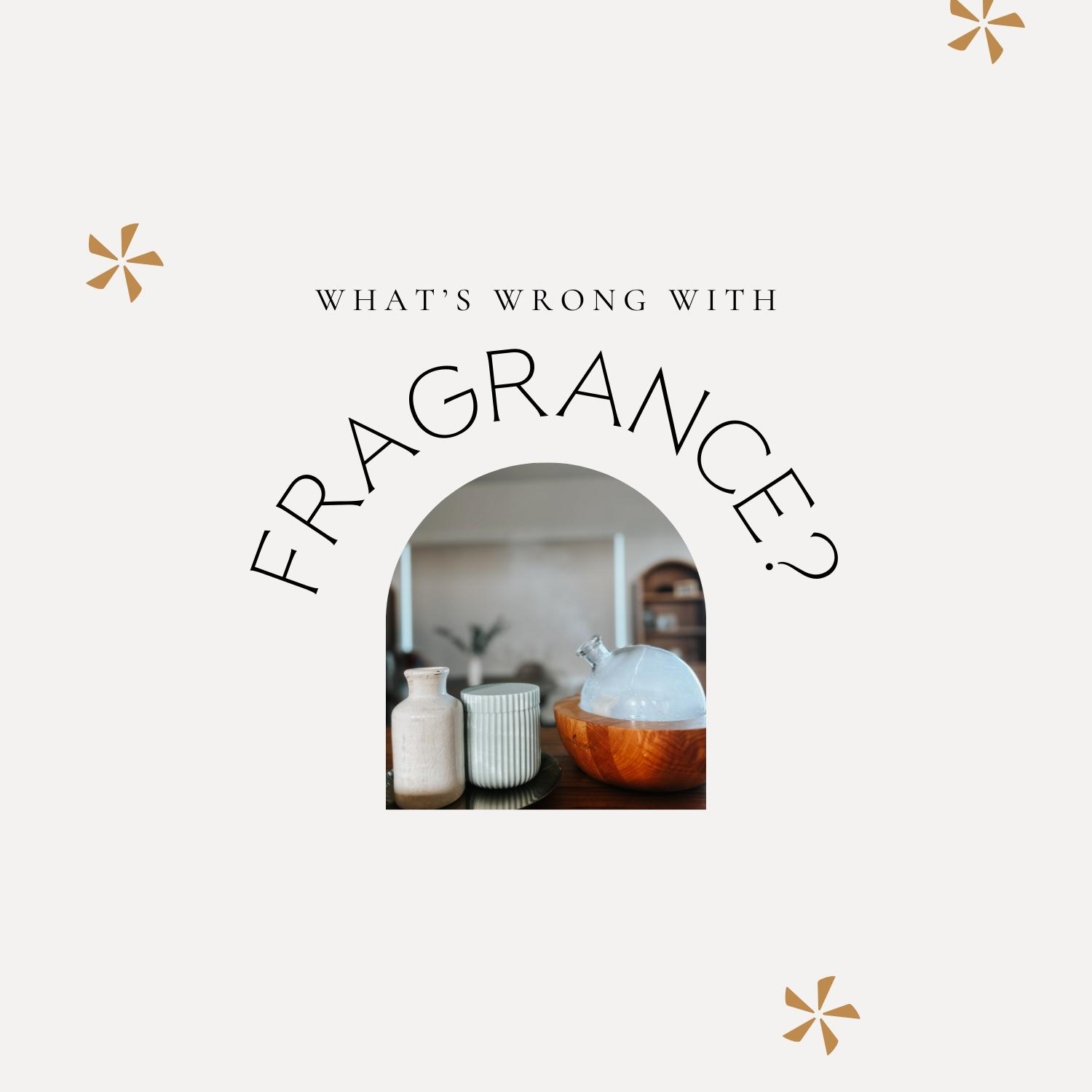
What’s Wrong with Fragrance?
If you turn over your favorite products, you’ll often find the word ‘fragrance’ in the ingredients. Many popular candles say “made with natural essential oils,” but sure enough in the ingredients list you’ll find only the word – “fragrance.” But what is fragrance??
Fragrance chemicals are organic compounds that volatilize, or vaporize into the air, which is why we can smell them. They are added to household and personal care products to give them a scent or to mask the odor of other ingredients.
Unfortunately, many of these volatile organic chemicals (VOCs – think the smell of paint or paint thinner) emitted by fragrance products can contribute to poor indoor air quality and are associated with a variety of adverse health effects. They are pretty much the last thing you want in a product you are burning for ambiance and aroma.
But it gets a little bit worse…. Did you know that to protect trade secrets, makers are allowed to withhold fragrance ingredients, so consumers can’t rely on labels to know what hazards may lurk inside those festive scented candles (and room sprays.. and wall plugs… and perfumes.. and cosmetics…). This is called the “fragrance loophole” in federal labeling law. Although all other ingredients in your scented household and personal care products must be disclosed on the label by their specific name, this loophole means that ingredients added to provide a pleasant scent, or to mask a bad one, need only be listed under the generic term “fragrance.”
The Environmental Working Group (EWG) reports that, while many popular candles and room sprays contain trace amounts of natural essences, they also typically contain a dozen or more potentially hazardous synthetic chemicals, some of which are derived from petroleum.
According to the EWG,
“Exposure to fragrance chemicals can cause headaches; eye, nose, and throat irritation; nausea; forgetfulness; loss of coordination; and other respiratory and/or neurotoxic symptoms. Many fragrance ingredients are respiratory irritants and sensitizers, which can trigger asthma attacks and aggravate sinus conditions.”
One example of a harmful ingredient (there are many!) when it comes to fragrance is styrene, an ingredient added to a wide variety of consumer products.
A 2011 finding by the National Toxicology Program (endorsed by the Academy’s National Research Council) found that styrene is “reasonably anticipated to be a human carcinogen.”
We know only that styrene might be an ingredient in any given fragrance because the International Fragrance Association, an industry trade group, publishes an online “Transparency List” (https://ifrafragrance.org/priorities/sustainability…) of ingredients that perfumers say they use in formulas for consumer products. Styrene is one of the 3,000-odd ingredients on the list.
Synthetic fragrances used in the making of room sprays, wall plugs, and candles can contain anywhere from 3000-5000 different chemicals, many of which haven’t been tested to ensure they’re safe for humans. Both synthetic fragrance and dyes are also known to release dangerous VOCs (not all VOCs are bad but many are) such as formaldehyde, petroleum distillates, limonene, alcohol and esters. Each of these chemicals have been known to result in headaches, dizziness, allergy symptoms, asthma attacks, respiratory tract infections and cancer.
THIS is why we are so passionate about ditching conventional products and switching to Young Living’s clean, effective and safe options! Young Living NEVER hides undisclosed fragrance in their products – they don’t even need to because of the incredible essential oils. All the Young Living products are infused with the highest quality, therapeutic grade essential oils which not only make fragrance unnecessary, they actually improve our health! The original fragrance of the plants that needs no tampering!
One of the things that separates our oils from many others in the industry is actually in this “fragrance” category. Many oil companies will actually ask their suppliers to alter the oils so that their smell is consistent. Their goal is simply for their oils to smell good and smell the same each time. Young Living’s goal is for the oils to maintain the integrity of the unique plant even if the smell varies so we reduce the most benefits. That’s why one bottle of peppermint might smell slightly different than another as the peppermint crop may have grown in slightly different weather conditions or had other plant variables. Isn’t that interesting?
Here’s the good news – you don’t have to sacrifice your love of yummy-smelling things when you ditch fragrance. Essential oils + a diffuser is a whole new world!
